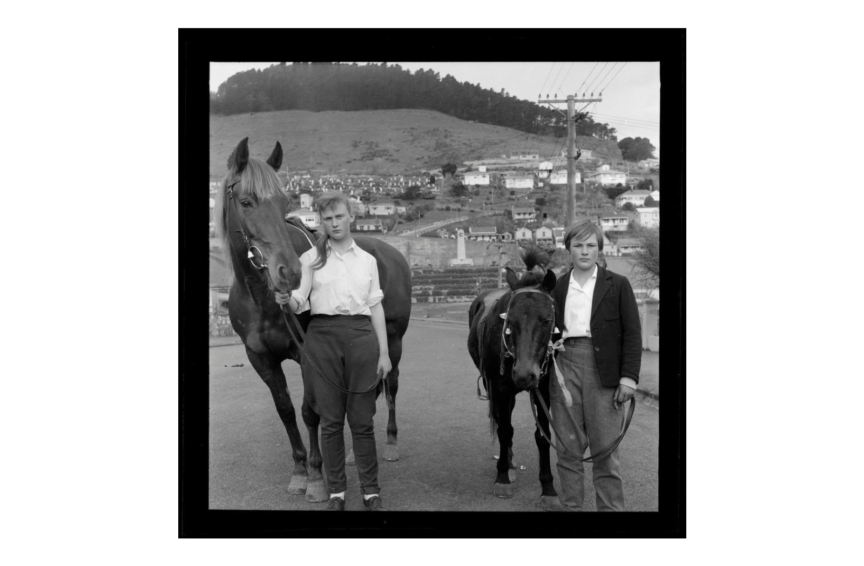PO Box 95
Lyttelton 8841
Te Ūaka recognises Te Hapū o Ngāti Wheke as Mana Whenua and Mana Moana for Te Whakaraupō / Lyttelton Harbour.
It’s a Shark, It's a Speed Boat, It’s Captain Champion!
It was a fine day in February 1961 and Captain Roy Champion was enjoying a leisurely jaunt in his speed boat Pamir with his daughter Barbara around Whakaraupō Lyttelton Harbour. The family fun was rudely interrupted, however, when the good Captain and Harbourmaster spied another speed boat clearly transgressing the 5 knot limit within 200 metres of the foreshore. The alleged offender led the Captain on a merry chase before attempting to make a getaway by beaching his boat at Charteris Bay. To the cheers of a small crowd of onlookers, Captain Champion handed the controls to his daughter before diving into the water and then chasing down the owner with whom he had a few words presumably concerning safe boating practices.
Captain Alexander Royle Champion was born on October 21, 1902. A third-generation mariner, his grandfather, Captain William Nile Champion, was the master of the missionary schooner Undine and a well-known pilot at Onehunga, while his father, Captain William Champion, commanded several vessels including the barque Otago. Young Roy Champion began his maritime career in Wellington at the tender age of 14 when he joined the barque Rona, which traded between New Zealand, Australia, and the Pacific Coast of North America. In 1920, at the age of 18, he set sail from Lyttelton in the barque Rewa for Cape Horn and Great Britain. He obtained his master's certificate to sail at just 23, at that time the youngest New Zealander to do so.
In 1929, master seaman Champion gave up the carefree seafaring ways of his youth to marry Edna Mae Monks, and served with the Southland Harbour Board at Bluff before joining the Lyttelton Harbour Board as a pilot in 1937. The start of World War II hostilities saw him aboard the John Anderson as examination officer inspecting all ships entering the harbour. On 12 October, as Captain Champion was returning to port after ordering the signals closing the harbour to all traffic, the fishing vessel Dolphin entered past the heads and failed to stop. A warning shot was fired from the Battery Point gunnery but tragically went astray, hitting the Dolphin’s engine room and killing its Captain, James Brassell. Already alerted to the apparent intruder, Captain Champion on the John Anderson had cleared the moles just in time to observe the Dolphin heeling over, and managed to rescue the ship’s second crewman William Willman before she sank. Later on during the War, Captain Champion returned to sea when he was released by the Harbour Board to command the mighty sailing ship Pamir, making several voyages across the Pacific carrying precious cargo in hostile waters.
Post WW2, Captain Champion returned to Lyttelton as harbour pilot, and in February 1946 he was tasked with berthing the liner Orion during a south-easterly gale. On Gladstone Pier, relatives and friends had gathered to welcome soldiers of the 2nd New Zealand Expeditionary Force returning from the European theatre. The then Minister of Defence, Mr F. Jones, was also on board. Despite the harsh gale conditions, Captain Champion successfully turned the 213 m liner around in the 300 m inner harbour basin using only two tugs, much to the awe of all who watched.
Captain Champion was appointed Lyttelton Harbour Master from 1950-1967 and was involved in the move to the Harbour Board’s Hollis and Leonard designed seven storey headquarters, later known as Shadbolt House. In August 1967 the fishing trawler Rimu capsized in heavy seas over the Mernoo Bank on the way to Chatham Islands. Harbourmaster Champion commanding Lyttelton Tug Wairangi, set out in the aftermath of the storm to search the area, but sadly to no avail. All hands were lost including Roy’s son Michael who was just 27 years old.
Roy champion turned 65 in October of that tragic year and, on retirement, went on to serve as a Board member and Chairman of the Lyttelton Harbour Board from 1968 to 1981. He was also a member of the Lyttelton Borough Council for nine years, serving as Deputy-Mayor for three of those years. In 1977, he was elected President of the Lyttelton Historical Museum Society and was instrumental in the fundraising campaign to find new premises, officially opening the Lyttelton Museum at Gladstone Quay in 1980.
Captain Champion lived with Edna Mae for many years at 8 Reserve Terrace in Lyttelton – locally known as ‘the Champion house’ until it was demolished, along with his Lyttelton Museum on Gladstone Quay, after the 2011 Canterbury earthquakes. He passed on at the venerable age of 83 in 1985. The Captain was known for his reputation as a stern disciplinarian, a seaman without peer, and someone who did not suffer fools gladly. Yet, he was also known for his kindness and compassion, always quick to offer help when needed. It has been said that regardless of whether he was speaking with a governor general, an admiral, a watersider, or a fisherman, or singing around the piano at a party, he remained true to himself as ‘a man without pretensions’.
Many thanks to Helen Greenfield and Andrea McHarg for their excellent research.
See also https://paperspast.natlib.govt.nz/newspapers/CHP19670610.2.51

